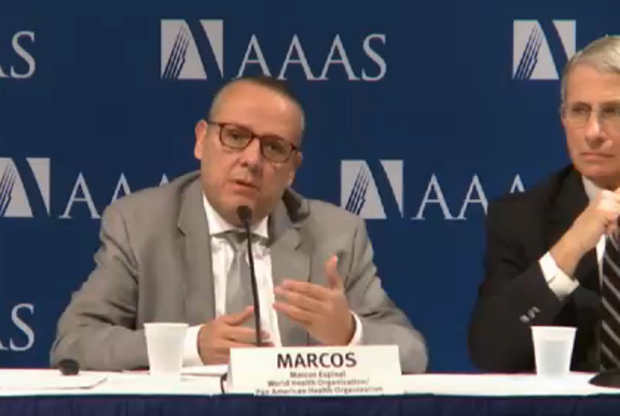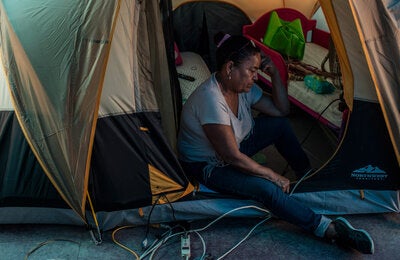

While scientists study Zika virus, the Pan American Health Organization is urging countries to strengthen surveillance, laboratory diagnosis, risk communication and "vector control, which is the tool we have at hand to ensure that we minimize the impact of this virus on the people of the Americas," according to Dr. Marcos Espinal, director of Communicable Diseases and Health Analysis at the Pan American Health Organization.
Washington, 12 Feb. 2016 —While scientists study Zika virus, the Pan American Health Organization is urging countries to strengthen surveillance, laboratory diagnosis, risk communication and "vector control, which is the tool we have at hand to ensure that we minimize the impact of this virus on the people of the Americas," according to Dr. Marcos Espinal, director of Communicable Diseases and Health Analysis at the Pan American Health Organization.
 "A lot of questions are not yet answered about Zika virus and its possible links to microcephaly and Guillain Barre, but we are working to mitigate its impact," Espinal said. He was speaking at an American Association for the Advancement of Science news briefing today, along with Dr. Anthony Fauci of NIH and Dr. Chris Dye of the World Health Organization.
"A lot of questions are not yet answered about Zika virus and its possible links to microcephaly and Guillain Barre, but we are working to mitigate its impact," Espinal said. He was speaking at an American Association for the Advancement of Science news briefing today, along with Dr. Anthony Fauci of NIH and Dr. Chris Dye of the World Health Organization.
PAHO has developed a strategy to help countries mitigate the impact of Zika by strengthening their abilities to detect the introduction and spread of the virus, reduce mosquito populations, ensure the necessary healthcare services, and effectively communicate with the public on risks and prevention measures.
Aedes mosquitoes—the main vector for Zika transmission—are present in all the region's countries except Canada and continental Chile. "In parallel to the scientific studies, we need to focus on vector control and management," Espinal said. "That will allow us to minimize the impact and take care of dengue and chikungunya at the same time."
Outbreaks of dengue and chikungunya, which are transmitted by the same Aedes mosquito as Zika, are continuing in many countries. Espinal noted that over 2.3 million cases of dengue and 600,000 cases of chikungunya were reported in the Americas in 2015.
The Zika virus a mosquito-borne virus that is new to the Americas, has spread rapidly because the population of the Americas had not previously been exposed to it and lacks immunity. Since Brazil reported the first cases of local transmission of the virus in May 2015, it has spread to 26 countries and territories of the Americas.
Work is continuing on research and development in vaccines, therapeutics, and diagnostics for Zika virus, Espinal noted.
PAHO, founded in 1902, is the oldest international public health organization in the world. It works with its member countries to improve the health and the quality of life of the people of the Americas. It also serves as the Regional Office for the Americas of WHO.
Links
— Zika/microcephaly
— PAHO Strategy for Enhancing National Capacity to Respond to Zika virus Epidemic in the Americas
— Microcephaly
— Countries and territories with Zika autochthonous transmission in the Americas



